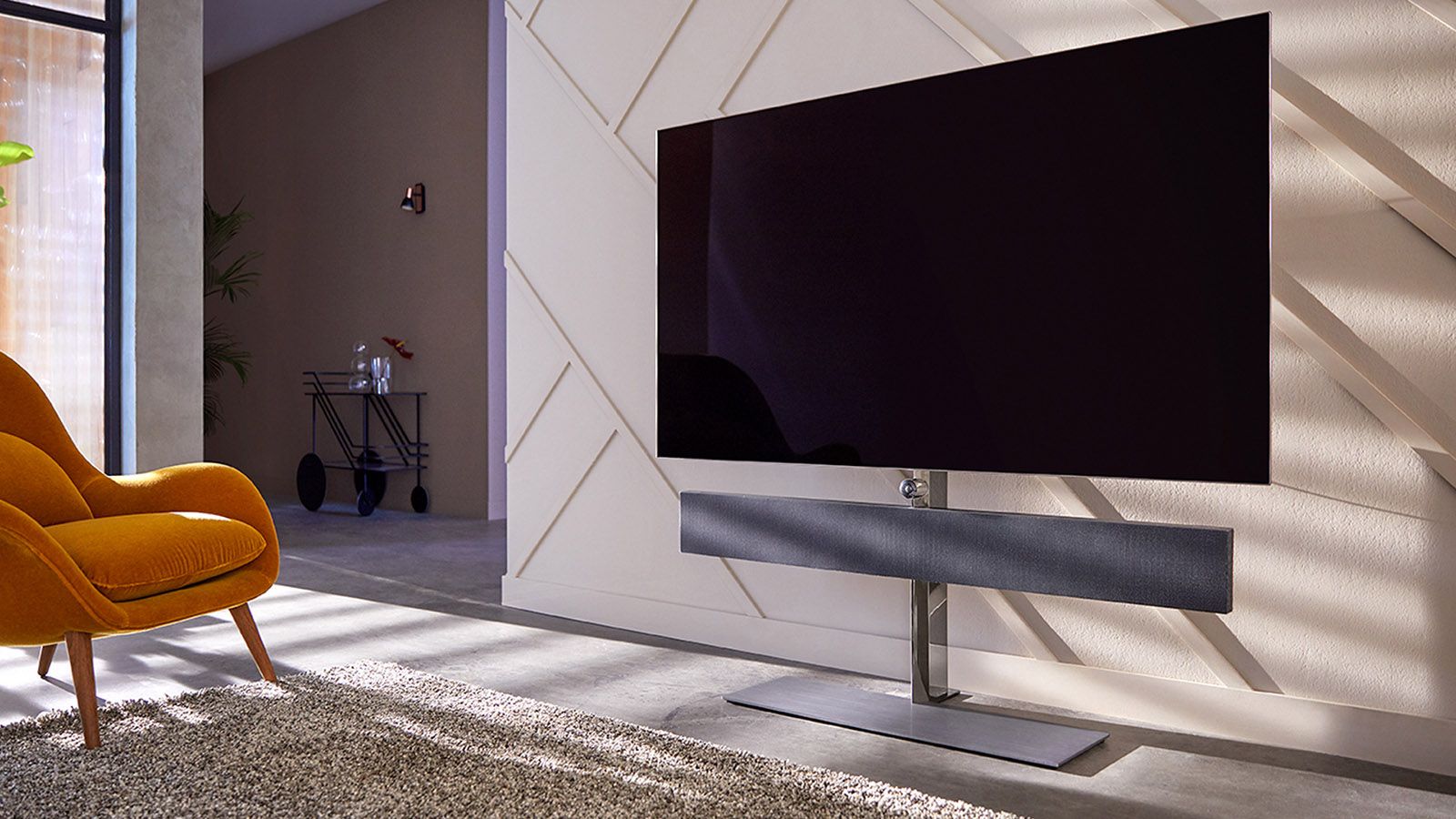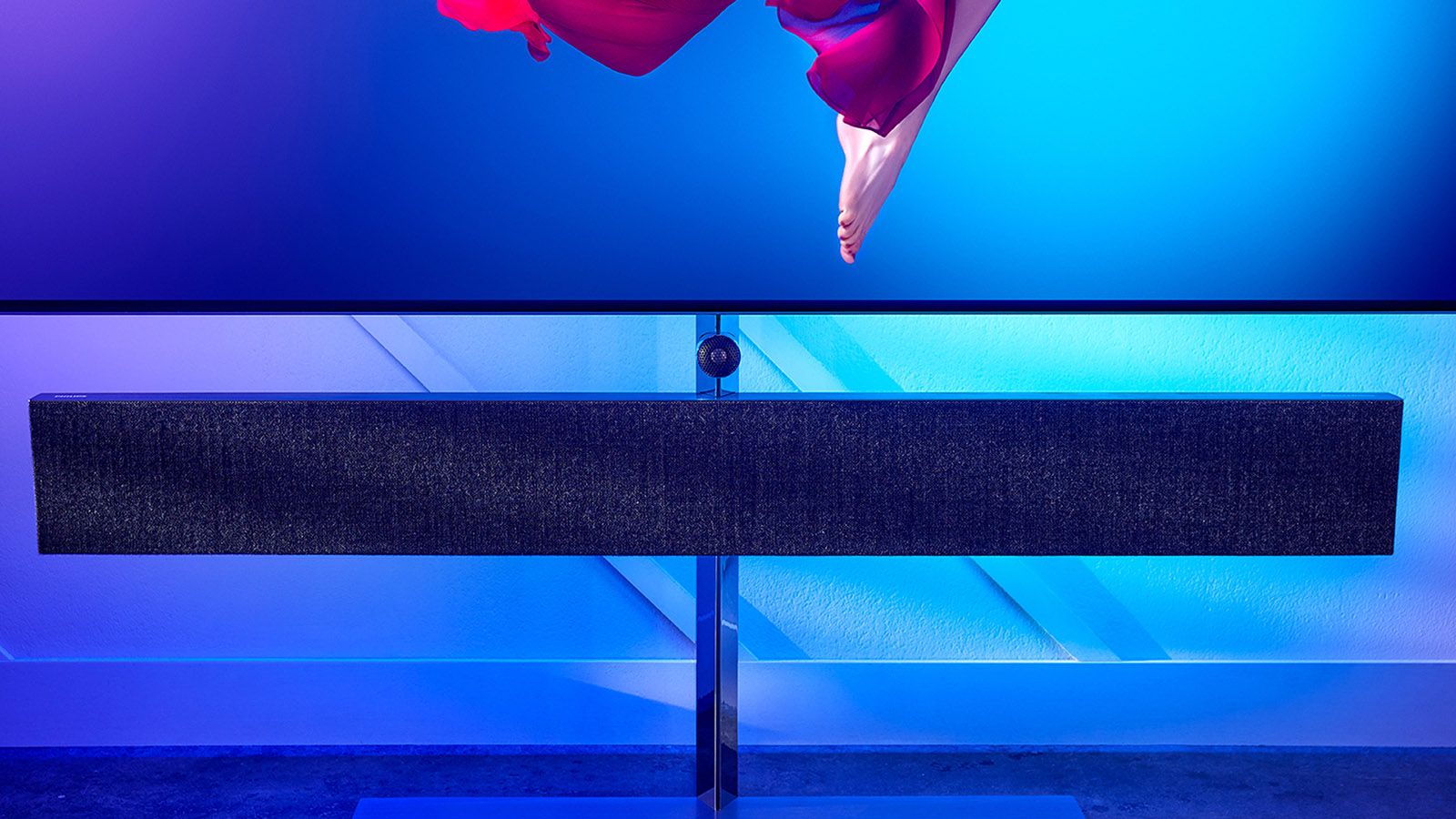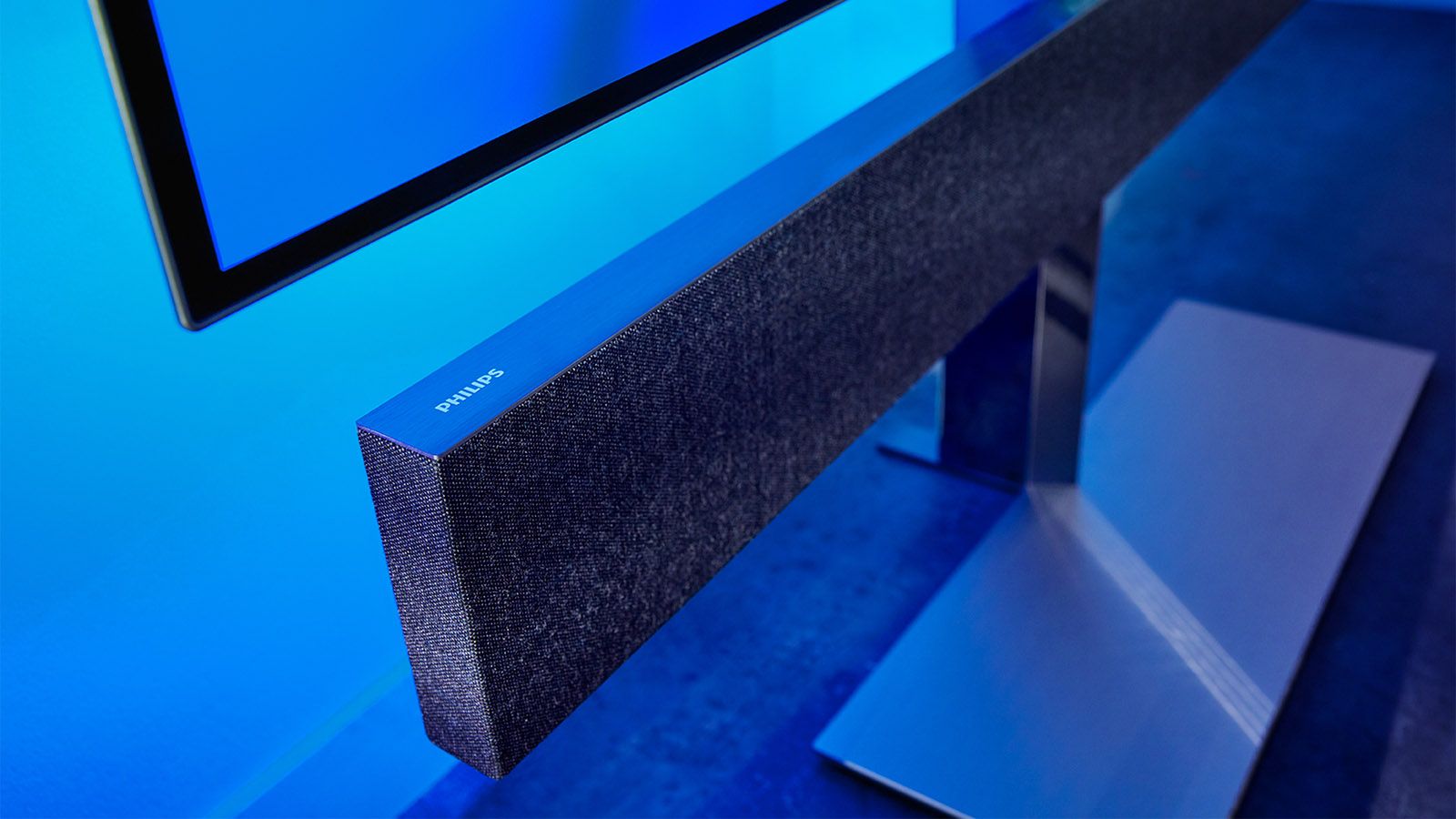Philips has taken its partnership with hi-fi specialist Bowers & Wilkins to a new level with the OLED+ 984, an ambitious one-off flagship that showcases the best of both brands.
The pair have worked together before, melding areas of expertise on the OLED 903 model, but in the 984 the bods from Bowers have been given free reign to create a TV sound system without compromise. The result is rather special.
Our quick take
The most overtly musical Bowers & Wilkins TV sound system yet, coupled to a leading edge OLED screen with universal HDR support, the Philips OLED+ 984 is a tour de force sound and vision package. There's not much we don't love it about it.
Consider this is an all-in-one solution for tech fashionistas, rather than a package for AV enthusiasts. You can't sensibly employ it in a home theatre system, and it requires a fair amount of floor space to stand tall. But for those with the digs to do it justice (and the cash), there's plenty to lust after.

Philips OLED+ 984 4K TV - 5.0 / 5
| FOR | AGAINST |
|---|---|
|
|
An impressive all-in-one design
- 4x HDMI, 3x USB
- Wi-Fi and Bluetooth
- Bowers & Wilkins sound system
Only available in a 65-inch guise, the OLED+ 984 is quite a construction. A take-it-or-leave-it design, fully upright the whole shooting match stands at 1.33m tall. If you don't want your telly to dominate your room, look elsewhere!
The screen hooks onto a substantial pedestal stand, which also accommodates a large soundbar with distinctive decoupled tweeter. Keeping this tower balanced is a hefty aluminium baseplate.
The soundbar is clad in acoustically transparent Kvadrat cloth and connects to the panel via a dedicated plug that protrudes from the top of the stand.
A three channel design, the soundbar sports a left, right and centre drivers. Each channel warrants separate high-frequency and 4-inch mid-bass drivers. These mid-bass woofers use trickle-down tech from Bowers & Wilkin's M1 speaker. Power output is rated at 3x 20 Watts.
The tweeters for the left and right channels are mounted at the edge of the cabinet, which produces a particularly wide soundstage. The centre channel gets Bowers' tweeter-on-top treatment. The iconic design recalls the brand's high-end 700 and 800 series loudspeakers.
Rear connections include four 4K HDMI inputs, three USB ports, an optical digital audio output, component AV via an adapter, and Ethernet - should you prefer that to the built-in Wi-Fi.
The set ships with a single full size infrared wand too.
Improved Android experience
- Android 9 TV OS
- Chromecast support
The OLED+ 984 is built around Google Android Pie, the latest iteration of the Android TV OS. This offers a considerable improvement over previous Android TV iterations, although it still demands you wade through acres of menus to make subtle picture setting adjustments.
As such, it lacks Freeview Play (due to an ongoing spat that seems to preclude the two platforms working with each other). This means it's short-changed in the catch-up app department. There is BBC iPlayer though, as well as Netflix, YouTube, Amazon Prime Video, and a selection of Euro-centric news services.
The return of four-sided Ambilight
- Four-sided Ambilight illumination
Philips' trademark Ambilight smart lighting is present too, in a newly reinstated four-sided configuration - and it works wonderfully well. In time-honoured Ambilight fashion, the lights around the edge of the screen to the rear can follow on-screen action, cast flat colour, or pulsate to music.
It's like extending the picture beyond the frame, adding to the immersion. Ambilight remains one of the crowd-pleasing joys of TV Philips ownership, and has been honed to perfection. Colour matching is swift and vibrancy high. While the lightshow can be distracting with movies, it comes into its own with sports and games, really expanding the visual ambition of the set.
Third-gen P5 processor boosts HD SDR
- Image processor: Philips TV P5 Picture Processing engine
- HDR support: HDR10, HDR10+, Dolby Vision
It's no secret that OLED black level depth is currently without peer. The real trick is to bring nuance and detail to near black, enhancing shadow detail. And in this regard, this screen is more than adept. Images boast almost three-dimensional depth.
Image processing is courtesy of a third-gen, dual-chip iteration of Philips lauded P5 image processor. According to Philips engineers, this processor offers a 30 per cent improvement in picture quality. There's new specular detection and skin tone optimisation, while detail gets a boost from advanced dejaggy filtering, giving smoother delineation.
The panel itself has also had some deep manufacturing changes. A new pixel design is said to reduce the chance of picture burn-in.
As you'd expect, Philips offers viewers a wide range of modes. Some only subtly different from each other. At first glance, Standard and Natural are almost imperceptible, but the latter drives contrast harder.
There's a more obvious difference between HDR Movie and HDR Natural modes. The former lacks a good deal of picture processing involvement, and looks flatter as a result.
The screen also boasts Universal HDR support. Whatever your preferred flavour of dynamic high dynamic range (HDR), be it HDR10+ or Dolby Vision, you're covered. That's a rarity, with only Panasonic supporting both of those dynamic formats (see the GZ1500 as an example).
The 984's HDR performance is excellent. Peak brightness is high with real-world highlights. To maximise dynamics, make sure the HDR Perfect mode is engaged.
We measured HDR peak brightness at 780 nits in the HDR Natural viewing mode (with HDR Perfect mode switched on, using a five per cent HDR brightness window). Opting for HDR Vivid, that climbs to 970 nits. This translates to outstanding contrast and a real sparkle to reflections, sunlight and HDR visual effects.
Philips has never been ashamed to push the envelope when it comes to wide colour. In the 984 images are deliciously rich, and there's no obvious banding thanks to cleverly interpolated bit-depth.
Dark Crystal: Age of Resistance (Netflix, in Dolby Vision) is a beautifully shot fantasy that combines bright, vibrant exteriors with some deep, intimidating shadows. As our puppet heroes make their way through gloomy caves in the opening episode, the panel exhibits plenty of detail in the darkness.
Image presets default to Dolby Vision Dark and Dolby Vision Bright with DV content. The latter still offers some of the trademark benefits of the P5 engine (following an agreement between Philips and Netflix) and looks all the better for it.
We were repeatedly reminded just what a stunning job the set does with SDR material. Its Perfect Natural Reality mode is an HDR upscaler able to intelligently boost highlights and shadow detail, bringing full panel dynamics to everyday footage. The result is a greater sense of image depth, and much more convincing HD upscaling. We suspect many simply won't be able to tell the difference between upscaled SDR and native HDR.
The set turns in a decent gaming performance too, with input lag at an acceptable 33.2ms in Game mode.
A soundbar with audiophile pretentions
- 3x 20W power output
- AI and Movie modes
Audio doesn't play second fiddle on the OLED+ 984. That Bowers & Wilkins soundbar offers a breathtakingly clear sonic performance, with impressive vocal clarity. Its tweeter-on-top really seems to lock dialogue to the screen. It's also good enough to serve as a streaming music speaker.
But there are caveats. While the bar does exhibit some weight, it can't do justice to the T-Rex footfalls in Jurassic Park. The soundbar is loud and smooth at 50Hz and above. That said, if you want to stomp a little lower, there's a wired subwoofer output.
But for all its clarity, we suspect some buyers will be disappointed this system is unable to take advantage of Dolby Atmos sources. There are no up-firing Dolby enabled speakers on board; instead we get a DSP enlargement to the soundfield which, while effective, we feel could be better still.
To recap
Philips claims the performance high-ground with this ambitious OLED screen and Hi-Fi sound system combo. Execution is top notch, with excellent image quality, but we suspect it’ll appeal more to tech fashionistas than AV enthusiasts


